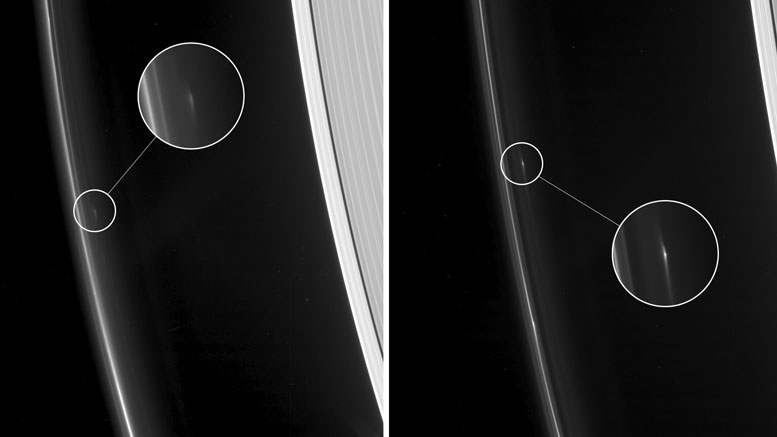
NASA’s Cassini Spacecraft is tracking several small, persistent objects in Saturn’s F ring.
These images show two such objects that Cassini originally detected in spring 2016, as the spacecraft transitioned from more equatorial orbits to orbits at increasingly high inclination about the planet’s equator.
Imaging team members studying these objects gave them the informal designations F16QA (right image) and F16QB (left image). The researchers have observed that objects such as these occasionally crash through the F ring’s bright core, producing spectacular collisional structures, similar to those created in 2006 and 2007 by the object designated S/2004 S 6.
While these objects may be mostly loose agglomerations of tiny ring particles, scientists suspect that small, fairly solid bodies lurk within each object, given that they have survived several collisions with the ring since their discovery. The faint retinue of dust around them is likely the result of the most recent collision each underwent before these images were obtained.
The researchers think these objects originally form as loose clumps in the F ring core as a result of perturbations triggered by Saturn’s moon Prometheus. If they survive subsequent encounters with Prometheus, their orbits can evolve, eventually leading to core-crossing clumps that produce spectacular features, even though they collide with the ring at low speeds.
The images were obtained using the Cassini spacecraft narrow-angle camera on February 5, 2017, at a distance of 610,000 miles (982,000 kilometers, left image) and 556,000 miles (894,000 kilometers, right image) from the F ring. Image scale is about 4 miles (6 kilometers) per pixel.
Never miss a breakthrough: Join the SciTechDaily newsletter.